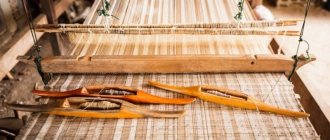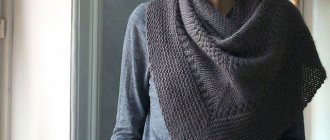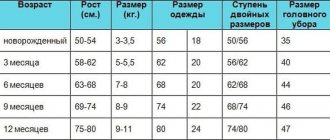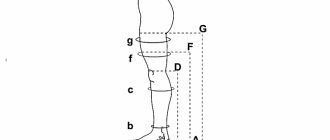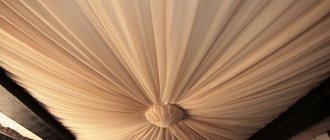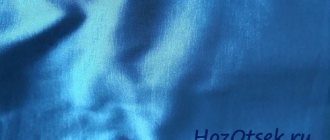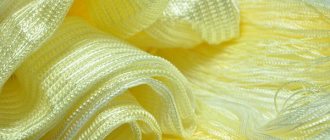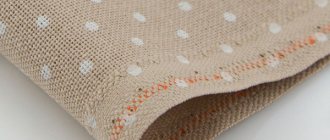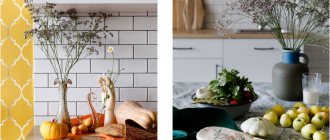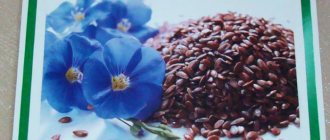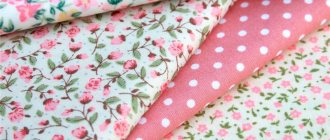Types of weaves in fabrics are classified as follows:
- Simple (smooth).
- Finely patterned.
- Complex.
- Large patterned.
Smooth
Before considering the types of weavings, it is worth defining the fibers used in textile production. Fibers are threads made by spinning or chemically spun from natural, artificial or synthetic raw materials.
The warp thread is the fibers stretched over the loom frame. Weft thread is the fibers attached to the shuttle of the loom. During operation, the shuttle moves the weft threads between the warp threads, ensuring overlap.
A repeating weaving pattern is called rapport. Designated by the letter R. Depending on the weft or warp, the indices “y” or “o” are placed, respectively.
The offset shows the number of threads removed from the previous overlap. Designated by the letter S with the corresponding indices “o” or “y”.
The main types of smooth weaves used in textile production are:
- Linen (simple).
- Twill.
- Satin.
- Satin.
Satin and sateen overlaps are combined into one group because they are produced identically and differ in the thread presented on the front side. This group is called satin-satin.
Polotnyanoye
Plain weave is characterized by the arrangement of weft and warp threads in a simple manner, alternating them in a checkerboard pattern. The rapport formula looks like this: RO = RU = 2.
The main characteristics of fabrics produced by this method include properties such as strength and smoothness. Canvases with the same face and back can have different density and stiffness indicators. The surface is smooth to the touch. They produce plain-dyed and patterned fabrics. The drawing is applied by printing.
The following types of fabrics are produced using the simple weave method in the textile industry:
- made of cotton: cambric, voile, madapolam, calico, chintz, calico, etc.;
- from linen fibers: suits, dresses, trim, canvas;
- from silk threads: crepe de chine, crepe georgette, crepe chiffon;
- woolen: cloth.
Thus, hand-woven homespun fabrics are produced. To weave ribbed fabrics, one thread must be thicker. The heterogeneity of the threads creates an even transverse pattern without shifting. Fabrics woven using this method are called false rep fabrics. For example, taffeta or poplin.
Simple weaves give the fabrics strength. The checkerboard pattern of threads demonstrates resistance to tearing and is not prone to abrasion; it can withstand washing in hot water with the use of bleaches and stain removers. Therefore, calico, chintz, and linen are considered leaders in sewing household items and bed linen.
The simple overlap method is considered basic and is used as the basis for complex weaving patterns.
Satin and satin
The ratio of rapport to shift, expressed by the fraction R/S, characterizes two more very popular and sought-after weaves - satin and satin. Unlike canvas floors, the weft and warp threads are intertwined less frequently. This ensures the smoothness and shine of the front surface of the canvas.
On the front side of satin fabrics, weft threads predominate. A typical representative of the group, satin is woven from double-weave threads produced using fiber twisting technology, which makes the fabric strong and wear-resistant.
Satin weave is a variant of satin, made identically, but with a predominance of warp threads on the front side. With this method, the weft threads are brought to the front side through 4 - 5 or more warp threads. The technology makes it possible to obtain smooth fabrics with a characteristic satin shine. The fabric is slippery, light but durable. During the sewing process, the sections are prone to fraying.
Satin-satin weave is used in the production of the following materials: satin, flannel, eraser, satin, some types of drape, suit and dress fabrics, crepe-satin, lining and corset materials.
Twill
Fabrics with a diagonal rib with an angle of inclination depending on the shear are produced using the twill overlap method. The angle is 45 degrees. During the weaving process, an asymmetric shift of 1, 2 or 3 threads is performed.
The traditional method is used to produce twill fabrics in which the hem is directed from top to bottom, from left to right. There are also canvases in the opposite direction. This method is a reverse twill weave.
Fabrics obtained by twill weaving demonstrate the following properties: density, unlike other main weaves - greater thickness and weight, the ability to stretch, especially diagonally, and softly drape. Smooth, abrasion-resistant, they are inferior to other types in terms of strength. But this is not critical.
Examples of material: twill, wool/silk blends, lining.
Reinforced twill has wide oblique stripes, thanks to this pattern the wear resistance of the material increases. This is how tartan, Boston, Cheviot, Bumazea, gabardine, etc. are produced.
There are subtypes of fabrics with twill weave. They make up a range of woven materials.
Broken
Broken twill represents a herringbone pattern. This type is characterized by the use of reverse twill weaving. Examples of fabrics: chevron, various types of dress and suit materials.
With shift
A subtype of the twill type with a shift is a modified version of the broken one. It is performed in a similar way to it, but with a shift in rapport along the warp or weft. Used to produce a material called gribson. This type of weaving is called reverse-shifted. Performed on the basis of twill with a rapport to shear ratio of ¼; 2/2; 2/3.
Diamond-shaped
Diamond-shaped fabrics are produced on the basis of twill weaves with a shear ratio of ¼; 2/2. They are also called cross-shaped or lozange. The texture of the fabric is formed by a pattern of rhombuses of different sizes. Examples: decorative and dress.
Complex
Composite or quilted twill is a highly resilient, high-strength fabric characterized by the presence of raised stripes of varying widths. It is made on the basis of rapport ½, 2/2. Examples of materials: decorative, dress.
Other types of twill include zigzag (with a variable inclination of the warp and weft threads), shadow (with a shadow transition), curved (changing the angle of the hem). Examples of fabrics: decorative and dress.
Technique: verticals and horizontals
On a loom, woven fabrics, including satin, are made according to the following algorithm: the warp threads (vertical) are alternately bent in a wave-like manner (partially raised, partially lowered). Vertical threads (weft) are directed into the resulting gaps, as if diving like a duck. Before each subsequent insertion, different groups of threads are raised.
This is how the first centimeters of the canvas are gradually born. On an industrial scale, these are such volumes of woven products that they could probably wrap the globe many times. Satin weave is called satin for its particularly shiny and smooth appearance. However, satin and satin can still be distinguished. Below is a picture of the satin weave.
Structural
Structural types include derivatives of the main ones using threads of different thicknesses. To create a relief or pattern, the warp or weft doubles in thickness by 2–3 times. Despite the structure of the fabric, it is soft and durable. Depending on the origin of the fibers used, stiffness values may vary.
Reps
Rep refers to materials derived from simple (plain) weave. The material is divided into three groups: main and weft reps, half reps. This division depends on which thread creates the thickening.
A transverse scar forms on the surface of the rep; on fabric produced by weft rep weaving - longitudinal.
Half-reps can be either weft or main. In prolureps technology, repeats with floorings of various sizes are used.
Using this method, fadeshine, flannel from cotton raw materials, dress and suit types of wool, silk and cotton rep are produced.
Gozhka
Another representative of the simple weave subtype is matting. The threads are overlapped by reinforcing the weft and warp in repeat. The surface of the canvases has a structure in the form of large squares alternating in a checkerboard pattern. Oxford and two-thread are typical representatives of matting.
Twill
Twill is a fabric produced using a twill weave, where the warp and weft threads exhibit a 2/2 ratio. The peculiarity of the material is that twisted threads are used during the production process. The history of its origin is connected with Scotland, where its production was driven by the desire to create warm clothing that would protect against cold winds.
The material dyes well and retains its color brightness. Its name was mistakenly confused with tweed during the time of the Duke of Windsor. And the characteristics of these two fabrics are similar. If initially twill was made from cotton fibers, today mixed versions are more common.
Made from cotton (twill-satin), mixed with polyester, with elastane (twill-stretch). The canvases have a textured surface and a noble shine.
Pique weave
Pique weave is a type of two-layer fabric. To form it, two warps or two wefts are required. The front side of this fabric has a plain weave. The relief pattern on the fabric is created due to the fact that the lower, root, warp Ok (Fig. 1-22), located along the contour of the pattern above the threads of the upper weft U, pulls them down, forming a depression, like a cotton quilt. Pique fabric patterns can be very diverse. Pique weave is used to produce fabrics for children's products, bedspreads, etc.
Rice. 1-22. Section of pique weave fabric.
Crepe
The technology for the production of crepe fabrics is based on the use of combined weaves. The surface of the material has a fine-grained texture. Overlapping threads are made on a linen basis in various combinations. Thus, additional overlaps are made on the surface of the weaving fabric, scattered in a certain order.
Crepe floors can be single or group. There are options using different technologies. Examples of fabrics: crepe satin, crepe chiffon, crepe de Chine, etc.
In addition to durability and attractive appearance, crepe fabrics are easy to sew. The edge of the cut does not crumble. The products retain their shape well, do not stretch or deform.
Leno weave
Leno weaves are used in the production of transparent - openwork fabrics. To form a weave, two systems of warp threads are required - a standing warp Os (Fig. 1-24), an openwork or leno warp Op and one weft. The standing threads serve as the base around which the interlacing of the openwork threads takes place. Leno weaves are very diverse; they can form various patterns on the fabric with single and group lenos.
Rice. 1-24. Leno or openwork weave
Diagonal
Diagonal is a fabric made using twill weave. There is a small, even scar on the face, located diagonally at an angle of 45 degrees.
The properties of dense matter include: resistance to tearing and abrasion, the ability to retain shape in the product, practicality. The fabric stretches diagonally, does not shrink when washed, and is durable.
How to care for satin
Care is selected according to the composition of the fabric. In most cases, satin fabrics are resistant to frequent washing, do not fade, and do not wrinkle. Both machine and hand washing and the use of bleaches are allowed. Fabrics also need to be ironed using special modes. With proper care according to the recommendations on the label, an item with a satin weave will last a very long time.
Satin weaving is included in the group of basic types along with satin, twill and plain. Excellent wear resistance, beautiful appearance and pleasant texture make satin fabrics popular in various areas from bed linen to fashionable wardrobe items.
Waffle
Waffle fabric is a textured textile material used in the manufacture of home textiles, with a characteristic relief pattern in the form of recessed cells with sides. Weave based on diamond-shaped twill with ¼ repeat.
Absorbs moisture perfectly, does not leave lint on the surface being wiped, and has a massage effect. They are made from cotton, less often from linen fibers.
Leave your comment
✅ Balance of classes - 1
Responsibility for resolving any controversial issues regarding the materials themselves and their contents is taken by the users who posted the material on the site. However, the site administration is ready to provide all possible support in resolving any issues related to the work and content of the site. If you notice that materials are being used illegally on this site, please notify the site administration using the feedback form.
All materials posted on the site were created by the authors of the site or posted by users of the site and are presented on the site for informational purposes only. Copyrights for materials belong to their legal authors. Partial or complete copying of site materials without written permission from the site administration is prohibited! The opinion of the administration may not coincide with the point of view of the authors.
Source
Jacquard types
Jacquard fabrics are distinguished by the fact that the design on them is not produced by printing, but is performed at the stage of weaving the threads. Threads dyed in different colors are used in weaving. As a result, canvases with double-sided patterns are obtained.
Jacquard can be large or small patterned. Depending on the author’s intention, up to 45 threads of different shades can be involved in the overlap. Jacquard fabrics are divided into simple and multi-layer. Large jacquard weave and warp knitwear are made on the basis of this weave.
Textile fabrics with jacquard weave are light and durable, do not stretch, retain their shape, are not subject to fading or shedding, and look very expensive and presentable. The cost of this material is high. But a jacquard product will also last for more than one year. With proper care, such things do not lose their original attractiveness for decades.
Satin diamonds and squares
Rapport (repetition) of satin weave is a simple fraction in which the numerator is the number of threads in the repeat, and the denominator is the amount of shift of the overlaps. For satins, the shift along the weft is indicated from left to right; for satins, the shift along the warp is indicated from top to bottom. To repeat satin (satin), you need at least 5 threads. The motif, the repetition of which makes up the texture of the fabric, is calculated using a special formula.
Satin weave of paper and fabric can form diamonds, parallelograms, squares - this depends on the location of the single overlaps. A single thread lies most evenly in square satins (satins). The 5-strand satin weave is used in a variety of fabrics, from fine fabrics for lightweight, stylish clothing to parts for heavy industrial applications, including seat belts.
Although this weave is the most common, there are other satin designs that use 4- and 8-strand strands.
Finely patterned combined schemes
Simple schemes for creating woven materials, known since ancient times, are still popular today.
By alternating simple weave options it is possible to obtain many interesting patterns. They are usually called combined.
Types with longitudinal or transverse stripes
Modern weaving techniques make it possible to combine all types of simple weaves by alternation. There are many options for the resulting fabrics with stripes, checkered patterns, and small geometric patterns. Patterns can alternate:
- rep and linen;
- broken twill and matting.
Many more combinations are possible.
Crepe schemes
Fine-grained crepe patterns are obtained by arbitrarily lengthening the overlaps in simple patterns. Sometimes a crepe effect is created by superimposing two simple weaving patterns. The pattern is very reminiscent of the front part of silks made from crepe twist threads.
To obtain an original impression, some fabrics combine crepe with other types of weaving.
Introduction
Read about: flocking and flocking: understanding the process.
Twill weave has a wide range of applications. It can be created in various ways. The main feature that distinguishes it from other types is the presence of pronounced diagonal lines that run across the width of the fabric.
Main characteristics:
- It forms diagonal lines from one side to the other.
- More threads per unit area than regular fabric.
- Fewer interlacing dots than regular fabric.
- Better coverage than regular weave.
- More thickness and mass of fabric per unit area.
Basic terms
There are two types of threads used in weaving:
- Some of them are directed along the canvas, are supporting and are called the base. These threads undergo great stretching, bend repeatedly, and are subject to noticeable pressure from the working parts of the machine. Therefore, especially strong threads from the best fibers that have been twisted are always used as the base. Very often, the threads that are laid in the base are additionally strengthened with sizing (adhesive solutions).
- The weft threads are oriented perpendicular to the warp. They bear less load. Consequently, fewer demands are placed on the weft threads.
The weft threads are pulled through the warp threads. This is the essence of weaving technology.
Types of fabric weave
Along the width and length of the entire canvas, the main pattern is constantly repeated. The unit of pattern that is reproduced in the process of obtaining fabric is called rapport. Simply put, this is a rectangular or square fragment of a pattern created from a strictly defined number of longitudinal warp and transverse threads, called weft. Rapport is a characteristic of the overall fabric pattern. It is expressed quantitatively as a fraction, the upper part of which indicates how many warp threads in a row are contained in the repeat, and the lower part indicates the total indicator of adjacent weft threads placed between the intersection of threads.
